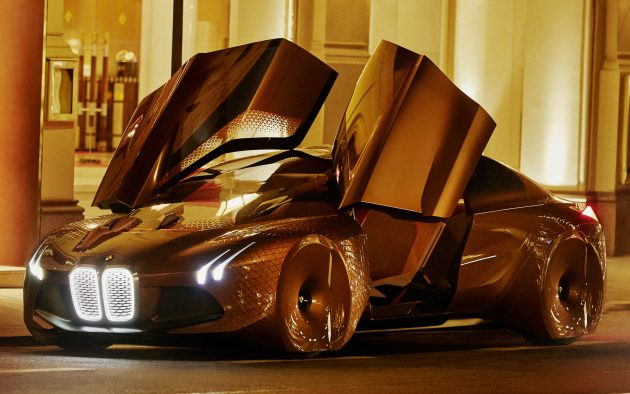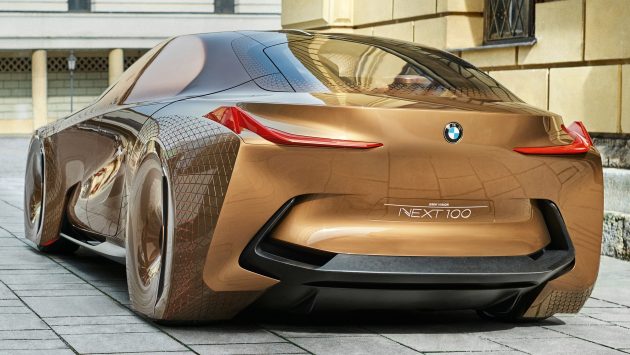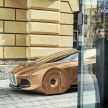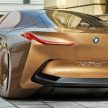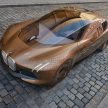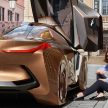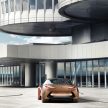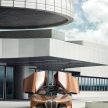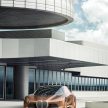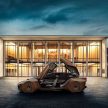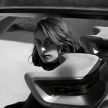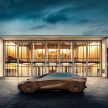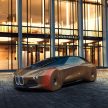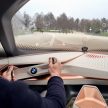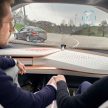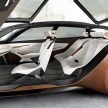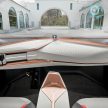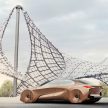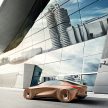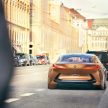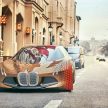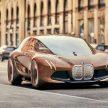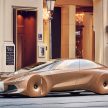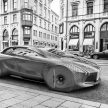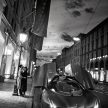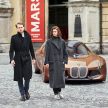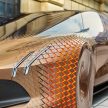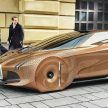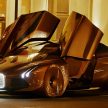Remember the BMW Vision Next 100 concept? Well, the futuristic centenary present is currently making its Asian debut in Beijing at the “Iconic Impulses. The BMW Group Future Experience” exhibition, and to commemorate the occasion, Munich has released new photos of the rolling laboratory that previews some of the technologies you might be able to expect over the next 100 years.
As expected from BMW, it’s a four-door sports sedan, although the sleek one-box shape isn’t really the sort of design that is typical from the company. Still, there’s the trademark double kidney grille – albeit a taller, full-height version – along with four streaks for headlights, signature L-shaped tail lights and a C-pillar Hofmeister kink to remind others that this is still, somewhat, a BMW.
A triangular motif litters the car’s design, both inside and out. Dubbed Alive Geometry, it consists of 800 panels on the exterior and interior of the Vision Next 100 that move and transform at will – on the outside, the scales around the wheel arches open up to wrap around the large inset wheels, as they swivel when the steering is turned. This design allows the Vision Next 100 to achieve a drag coefficient of just 0.18 Cd.
Don’t be fooled by BMW’s claim that the car has “compact dimensions” – at 4.9 metres long it’s about the same length as a 5 Series, although its 1.37-metre height is around that of the 6 Series. Still, it’s claimed that Vision Next 100 has as much interior space as a “luxury BMW sedan” (7 Series, perhaps?), so the unique proportions probably do save some space compared to a traditional sedan design.
Swing open the suicide butterfly doors and you’ll find a minimalist cabin, like most futuristic concepts. Here, there are two modes of vehicle operation – Boost, which provides manual driving augmented with a number of assist features, and Ease, which takes over the driving of the car autonomously.
In Boost mode, the Alive Geometry panels inside the car – inspired by the coordinated movement of a flock of birds – highlight the ideal driving line and warn of oncoming vehicles and other hazards, a kind of intuitive feedback which BMW claims has a more physical and immediate impact than verbal or visual instructions. The driver’s seat also changes position, and the centre console is angled more towards the driver.
Adding to that, the contact analogue BMW Head-Up Display uses the entire windscreen to show information such as the ideal driving line, steering point and speed, and also displays things like crossing vehicles in poor weather or when visibility is obstructed.
All this is performed through the Companion artificial intelligence system, which continuously learns about the driver and adapts to offer them the right support and visual guidance. This is visualised through a gemstone-like sculpture at the base of the windscreen, which retracts in Boost mode for minimal distraction, and lights up in Ease mode to indicate autonomous driving. The Companion also displays a green light gradient in front of the car to show pedestrians that it is safe to cross.
The interior mood in Ease mode is considerably different – the steering wheel and centre console stow away, and the seats move towards the doors to allow occupants to sit at a slight angle, making it easier for them to face each other. The HUD also becomes an infotainment display that also shows personalised content.
Sustainability is an important part of the Vision Next 100 – the car is made from carbon fibre and plastic, with components such as the side panels constructed from residues of regular carbon fibre production. The interior also uses high-quality textiles and mono-materials in place of traditional wood and leather.
Looking to sell your car? Sell it with Carro.

